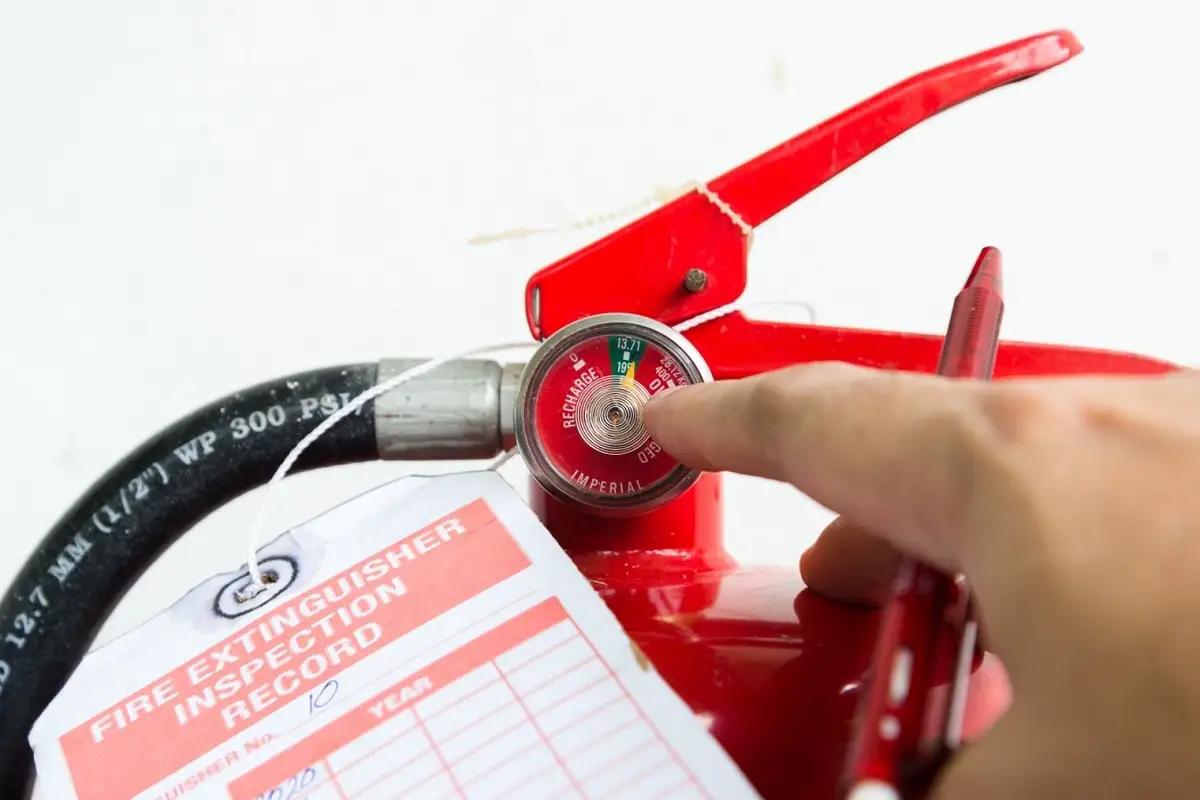Fire extinguishers are an essential piece of fire safety equipment, yet many people use them incorrectly or forget about them altogether. With that in mind, below are some tips on how to correctly check fire extinguishers.
How To Check a Fire Extinguisher
Checking a fire extinguisher is not very difficult and only takes a few minutes. Here are the steps:
- Make sure the fire extinguisher is easily accessible.
- Make sure the container and handle are not damaged.
- Make sure the pressure gauge is in the green zone.
- Make sure the tag is attached and has an inspection record.
Once the fire extinguisher is inspected, record the date on the tag.
A physically damaged fire extinguisher is a safety risk. It could not function properly, or worse, cause the user to be injured. Always do a quick inspection of your fire extinguisher for any signs of physical damage atleast once per month.
The pressure gauge should be within the operational zone (colored in green). If not, the fire extinguisher needs to be recharged. A fire extinguisher without enough pressure will not spray enough contents far enough. A fire extinguisher that is overcharged could be safety hazard.
How To Check a Fire Extinguisher’s Charge
Fire extinguishers require enough charge to spray their contents the distance required to meet the fire while keeping the user safe.

It is important to check fire extinguisher charge before using it in an emergency. A fire can spread very quickly so knowing how often fire extinguishers need checking is essential. Take the time to learn how to check a fire extinguisher guage.
The NFPA recommends that all rechargeable-type fire extinguishers be recharged after just one use. Regular ABC dry chemical fire extinguishers that are not used still need to be recharged every 6 years atleast after the date of manufacture.
How To Read a Fire Extinguisher Gauge
Fire extinguisher guages are fairly easy to read. They include a needle and three zones: 1.) fully charged, 2.) undercharged, and 3.) overcharged. The center area will be green and this is where you want the needle pointing. The pressure guage is usually located on the side of the top handle.
If your fire extinguisher is undercharged it should be refilled by a qualified fire equipment professional. If it is overcharged, a professional will need to release some of it so it is safe to store and use.
How To Check a Fire Extinguisher Without a Pressure Gauge
Most fire extinguishers will have a pressure gauge attached to them. However, one type, the C02 fire extinguisher does not. This is because C02 always remains at one level of pressure – 830 psi and a pressure guage will make no difference.
Instead, to check the pressure of a fire extinguisher that does not have a guage, it must be weighed. According to the NFPA 10, C02 fire extinguishers need to have a pressure test done once every 5 years. A fire extinguisher without a guage that has been ignored for too long could be low on pressure, resulting in it being potentially useless during a fire emergency.
How Often Do Fire Extinguishers Need To Be Checked?
The NFPA requires fire extinguishers be inspected every 12 months, at least. The date and person doing the inspection should be recorded on the tag.
Certain fire extinguishers should have a hydrostatic test every 6 years, where they are emptied of their contents and examined by a trained fire professional. These include dry chemical, wet chemical, and pressurized water fire extinguishers.
Along with the attached tag, a second record of a fire extinguisher inspection should be kept in a secure location. This should include the following information:
- Fire extinguisher type
- Extinguisher manufacture date
- Last maintenence date
- Last person to perform the maintenence
- Last hydrostatic test date
To Close
Fire extinguishers need to be checked, inspected and maintained properly to do their job in a fire situation. Do not neglect your fire extinguishers because one day you may need one to operate fully in order to put out a fire.

